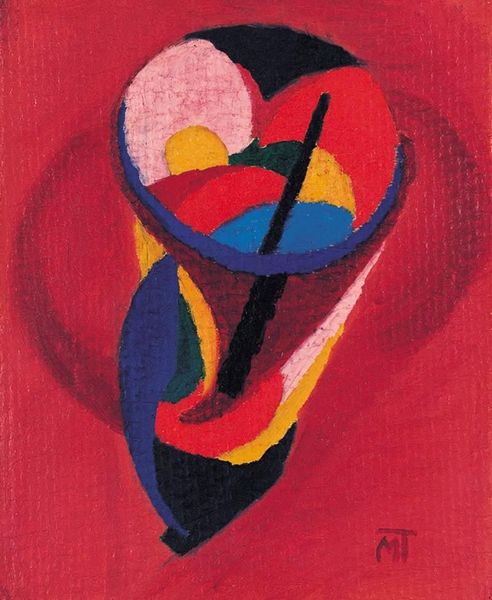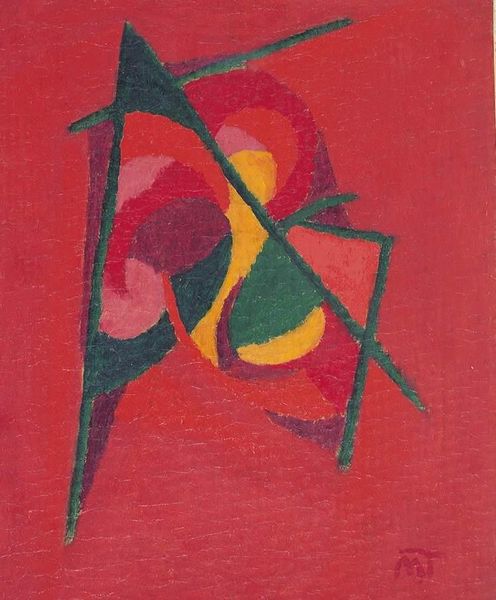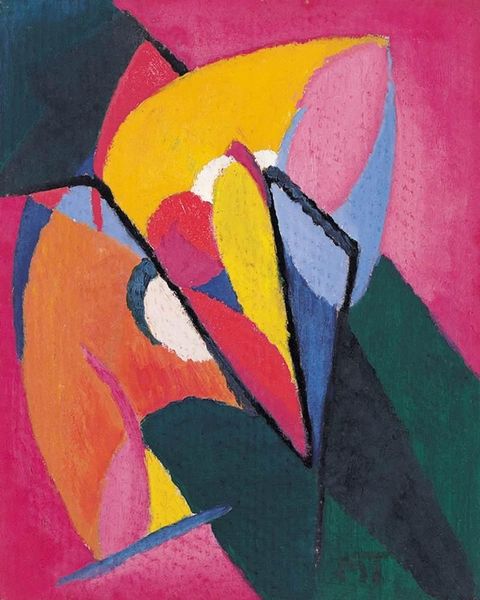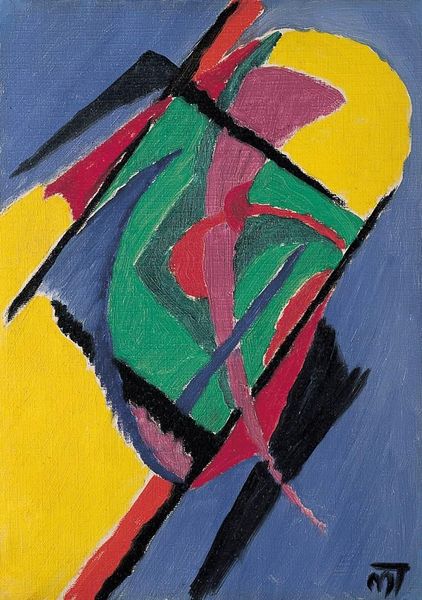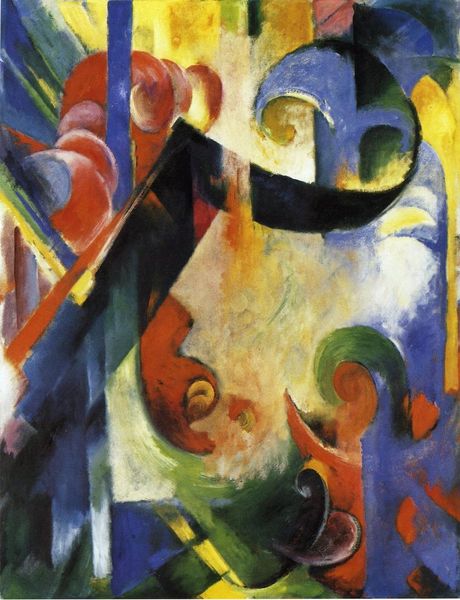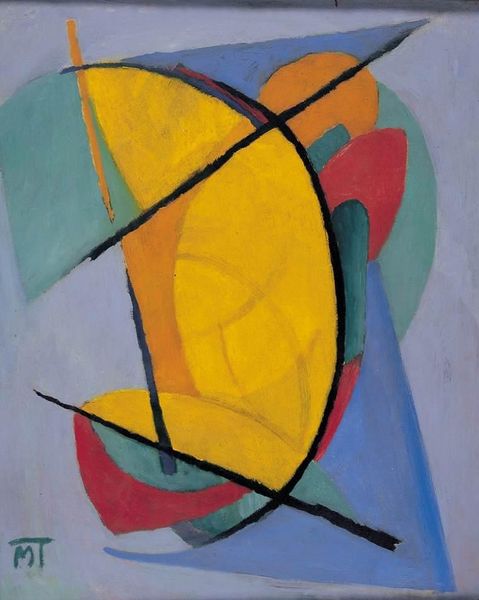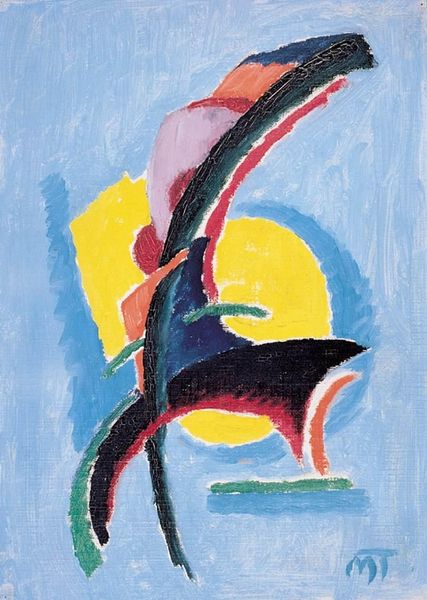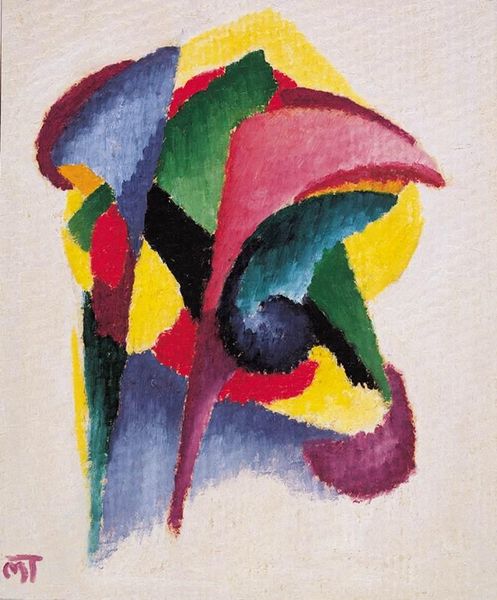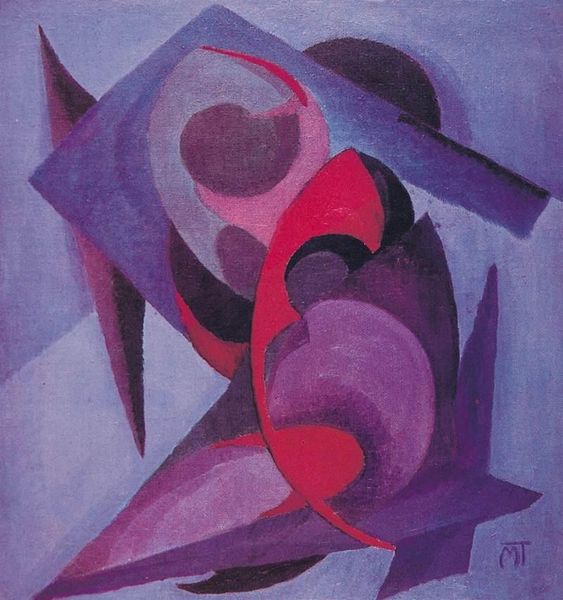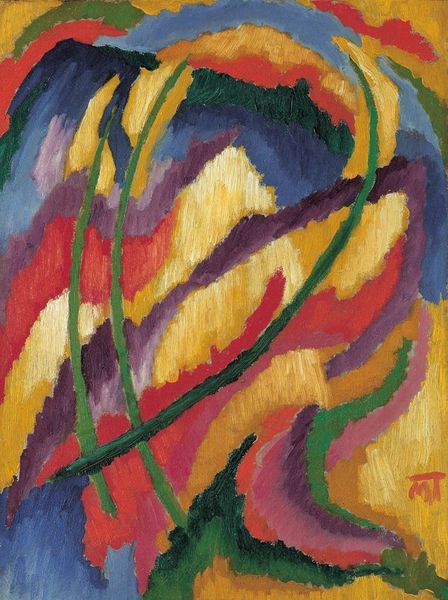
panel, oil-paint
#
panel
#
oil-paint
#
oil painting
#
expressionism
#
geometric-abstraction
Copyright: Public domain US
Editor: This is "Composition" by Janos Mattis-Teutsch, created in 1922 using oil paint on panel. The bright colors feel surprisingly joyful, almost defiant, against the somewhat somber background. How do you interpret this work, considering its historical context? Curator: Given the social and political turbulence of the early 1920s in Europe, particularly in the aftermath of World War I and the rise of various modernist movements, this painting's vibrant colors and geometric forms are intriguing. This Expressionist piece could be a rejection of established artistic norms and also perhaps a visual response to the instability and rapid changes occurring in society. What about the composition strikes you? Editor: I see these sharply defined shapes, almost fighting for space within that soft, rounded frame. It's like order imposed on chaos. Curator: Precisely. Think about the institutions that were gaining or losing power then, the artistic manifestos being published, the new ways of seeing and being. The centralized composition in this painting, does it remind you of anything? Does the color have any specific historical meaning? Editor: I see your point! Maybe the centralized composition symbolizes the struggle for stability or perhaps the color are an intentional attempt to counter prevailing bleakness. But how did the art world react to this kind of work? Curator: Works like this often faced harsh criticism from more conservative factions, who saw them as degenerate or incomprehensible. However, they were embraced by avant-garde circles eager to explore new visual languages that reflected their experiences of the modern world. Mattis-Teutsch's work offers a glimpse into that complex dialogue. Editor: I never considered how art becomes a visual commentary on social and political change, or even shapes social perceptions. That's really fascinating. Thanks! Curator: Indeed. It’s through considering the public role of art that we understand its true power. Thank you.
Comments
No comments
Be the first to comment and join the conversation on the ultimate creative platform.


